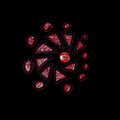Template:Selected anniversaries/July 16: Difference between revisions
No edit summary |
No edit summary |
||
| Line 53: | Line 53: | ||
||1986: Jerrold Reinach Zacharias dies ... physicist and Institute Professor at the Massachusetts Institute of Technology, as well as an education reformer. His scientific work was in the area of nuclear physics. Pic. | ||1986: Jerrold Reinach Zacharias dies ... physicist and Institute Professor at the Massachusetts Institute of Technology, as well as an education reformer. His scientific work was in the area of nuclear physics. Pic. | ||
File:Herbert Lawrence Anderson.jpg|link=Herbert L. Anderson (nonfiction)|1988: Nuclear physicist [[Herbert L. Anderson (nonfiction)|Herbert L. Anderson]] dies. Anderson contributed to the Manhattan Project: he was a member of the team which made the first demonstration of nuclear fission in the United States, in the basement of Pupin Hall at Columbia University, and he participated in the first atomic bomb test, code-named Trinity | File:Herbert Lawrence Anderson.jpg|link=Herbert L. Anderson (nonfiction)|1988: Nuclear physicist [[Herbert L. Anderson (nonfiction)|Herbert L. Anderson]] dies. Anderson contributed to the Manhattan Project: he was a member of the team which made the first demonstration of nuclear fission in the United States, in the basement of Pupin Hall at Columbia University, and he participated in the first atomic bomb test, code-named Trinity. | ||
||1994: Julian Schwinger dies ... theoretical physicist. He is best known for his work on the theory of quantum electrodynamics (QED), in particular for developing a relativistically invariant perturbation theory, and for renormalizing QED to one loop order. Pic. | ||1994: Julian Schwinger dies ... theoretical physicist. He is best known for his work on the theory of quantum electrodynamics (QED), in particular for developing a relativistically invariant perturbation theory, and for renormalizing QED to one loop order. Pic. | ||
Revision as of 20:04, 16 July 2019
1530: Mathematician Johannes Stöffler meets a man he calls "The Judge", who calls himself Havelock.
1746: Priest, mathematician, and astronomer Giuseppe Piazzi born. He will discover dwarf planet Ceres.
1944: Film director and arms dealer Egon Rhodomunde raises money for new film by selling shares in the Manhattan Project.
1945: World War II: The heavy cruiser USS Indianapolis leaves San Francisco with parts for the atomic bomb "Little Boy" bound for Tinian Island. See Manhattan Project.
1945: Trinity nuclear weapon test: the United States successfully detonates a plutonium-based test nuclear weapon near Alamogordo, New Mexico. See Manhattan Project.
1945: Industrialist, public speaker, and alleged crime boss Baron Zersetzung says the Manhattan Project is "a sound investment in the wartime marketplace."
1973: Watergate scandal: Former White House aide Alexander Butterfield informs the United States Senate that President Richard Nixon had secretly recorded potentially incriminating conversations.
1988: Nuclear physicist Herbert L. Anderson dies. Anderson contributed to the Manhattan Project: he was a member of the team which made the first demonstration of nuclear fission in the United States, in the basement of Pupin Hall at Columbia University, and he participated in the first atomic bomb test, code-named Trinity.
2016: Red Spiral 2 voted Picture of the Day by the citizens of New Minneapolis, Canada.








